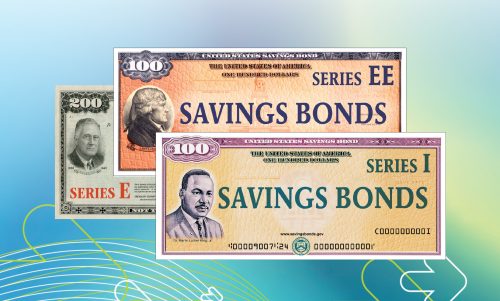- Annual percentage rate (APR) is the total cost of borrowing money over the term of a loan, whereas annual percentage yield (APY) refers to interest earned on an investment or savings account.
- APR is relevant to financial products like credit cards and loans; APY is associated with products such as high-yield savings accounts and CDs.
- APY accounts for compound interest, while APR doesn’t.
Both annual percentage rate (APR) and annual percentage yield (APY) are used to calculate interest on financial products, but people often confuse the two terms. Understanding the difference between APR and APY is important, so you can evaluate financial products across banks or lenders, whether you’re borrowing money or opening a high-yield savings account.
APR represents the total cost of borrowing money over the entire term of a loan. As opposed to simple interest on a loan, APR refers to the “actual” rate of interest paid, including factors such as fees or costs to obtain the loan. If you’re choosing among loans or credit cards offered by different financial institutions, the APR can help you understand how much interest you’d ultimately pay.
On the other hand, APY is the annual rate of return on an investment. It represents the interest you can earn on an account, including the compounding effect of interest, and it’s commonly associated with products such as high-yield savings accounts and CDs.
A deep dive into what each term means, where you will see them referenced and the various factors that impact them can help set you up for financial success.
Compound interest and interest rates
Compound interest and simple interest may sound similar, but they’re two distinct concepts.
APY accounts for compound interest, which is an important factor when calculating the rate of return for many products. In contrast, APR does not include compound interest.
Compound interest: Money earned on the base interest, as well as the interest accrued as it’s reinvested into the investment product. Put another way, compound interest is the interest you earn on interest and the principal balance.
Simple interest: Interest calculated based on the principal balance of the money borrowed. For example, if you take out a loan, the monthly principal and interest payments are based on the simple interest, not the APR.
Accounts with APR vs. accounts with APY
Because APR and APY have different meanings, you will see them associated with different types of accounts and financial products. Here are a few of the most common examples you’re likely to encounter:
| Accounts with APR | Accounts with APY |
| Credit cards Personal loans Auto loans Mortgage loans | High-yield savings accounts Money market accounts Certificates of deposit (CDs) 401(k) accounts 529 accounts Bonds |
Calculating APR vs. APY
The APR and APY formulas are different. Knowing both rates is important when shopping for loans or choosing an interest-bearing account, since they impact how much you’ll either pay for your loan or how much you’ll earn on your investment.
APR formula
There are a few components to the APR formula which help discern how much you will pay on a financing product, such as a personal loan, auto loan, mortgage loan or a credit card. The formula to calculate APR is as follows:
| APR Formula |
| APR = [(Fees + Interest / Principal / n) x 365] x 100 Fees: Administrative fees, including origination fees, closing costs, etc. Interest: The total interest paid over the term of the loan Principal: The amount of the loan without interest and fees Term, n: Number of days in the full loan repayment term |
APY formula
Similarly, the APY formula comprises multiple elements. To calculate your APY, you will need your account’s interest rate and the frequency of compounding. For example, the frequency of compounding interest can be daily, monthly, semi-annually or annually. The frequency of compounding is an important factor since it will have a direct impact on the amount of interest the account earns over time, as APY includes compound interest.
| APY Formula |
| APY = (1 + r/n)n − 1 r: Interest rate n: Number of compounding periods per year |
Why it’s important to understand APR and APY
Understanding APR and APY is useful for comparison shopping among financial products.
Since APR accounts for fees and other costs associated with loan products, these figures help demonstrate the actual cost associated with borrowing money.
Conversely, if you are shopping for a high-yield savings account or other investment products, you’ll want to compare the APY among these options.
However, the product with the lowest APR or highest APY may not always be the right fit for you and your financial goals. In general, a lower APR means a lower cost of borrowing money and a higher APY may result in a higher rate of return, but there are many other factors to consider before making a financial decision.
For example, a one-year CD may have a higher APY than a four-month CD, but the money will be locked up for one year, with penalties for withdrawing before the CD reaches maturity. If the time horizon of 12 months to maximize the investment is not in line with your personal needs, then the largest APY may not be the best option for you.
It’s important to look at all aspects of a loan or investment product besides the APR and APY, such as terms for borrowing and saving. A personal banker can walk you through your options, so you can make the best choice for your financial future.










